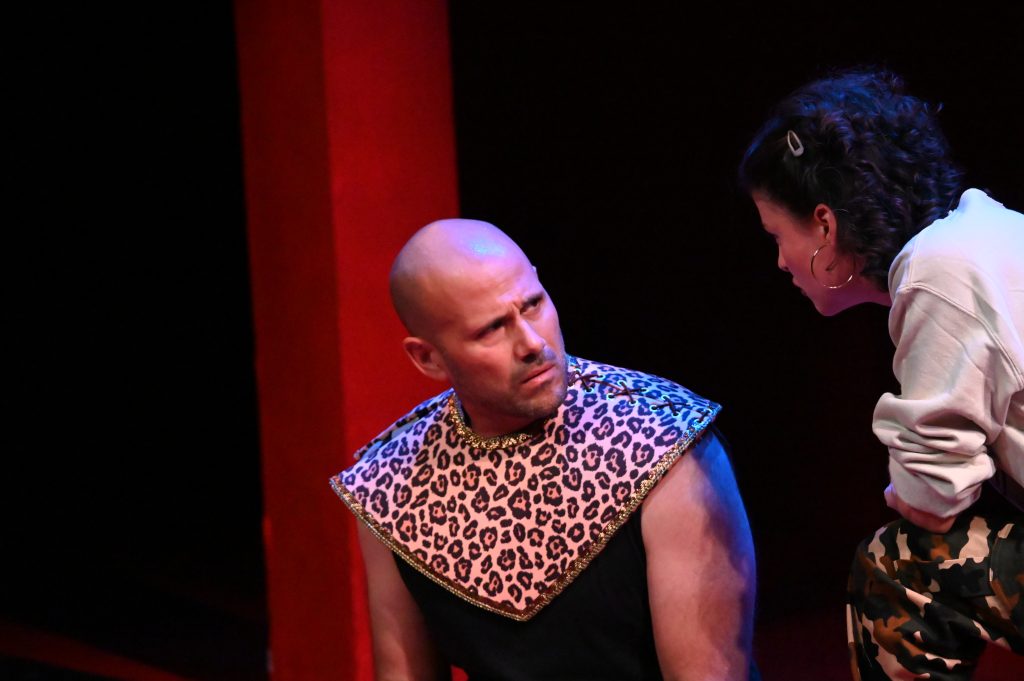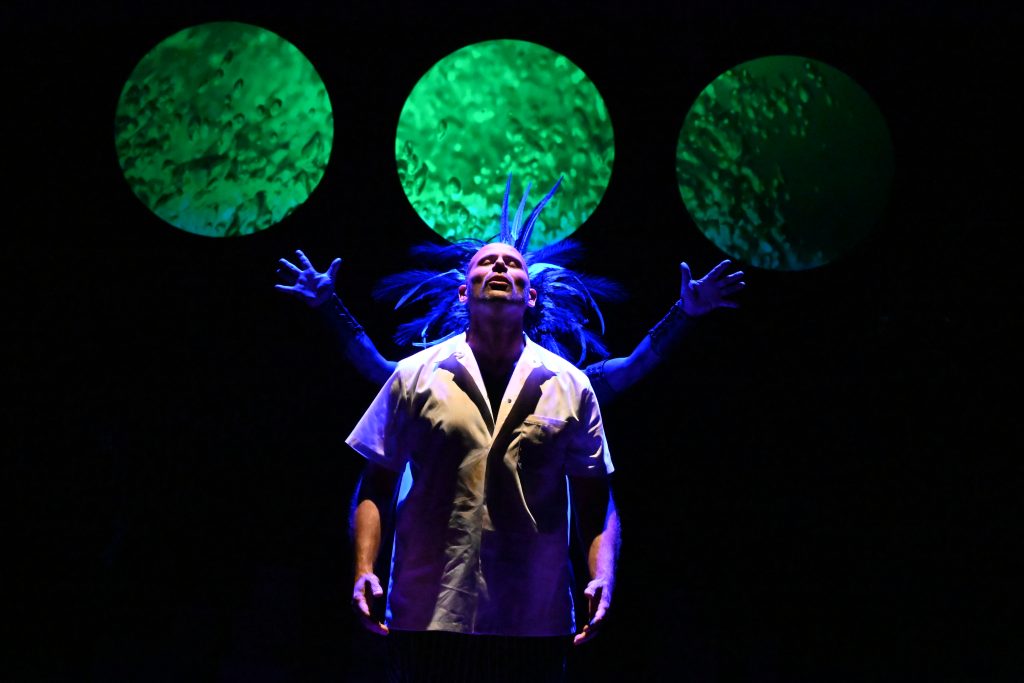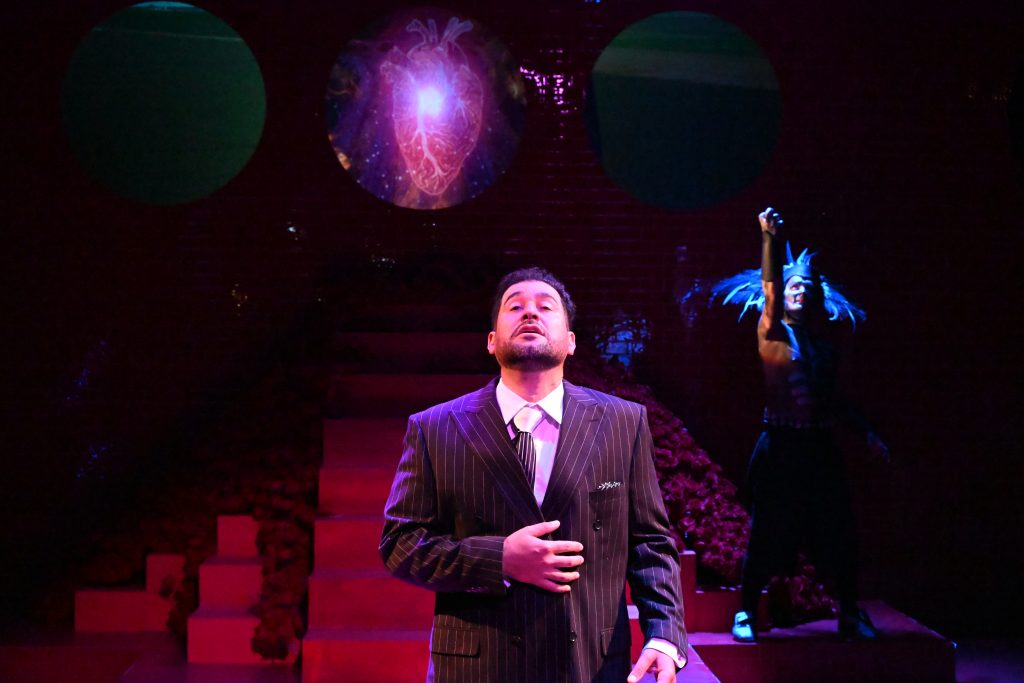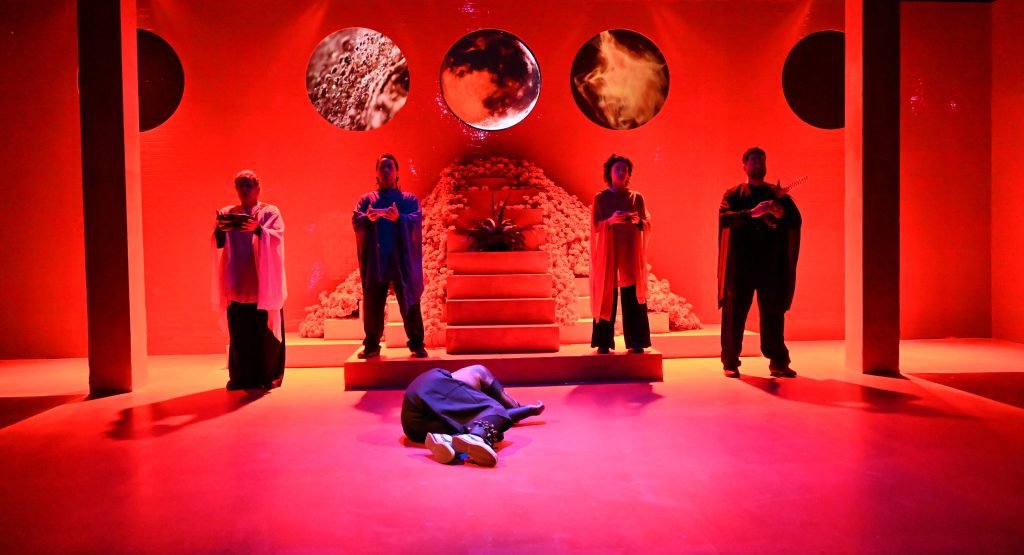
“Aztlán”: A Fiery Journey to Mexican Myth—at The Magic
Luis Alfaro’s Epic Speeds from Aztec Splendor to U.S. Sacrifice
by Robert M. Gardner
“Aztlán” covers centuries of Aztec and Mexican stories, spanning thousands of miles from ancient Aztlán and the temple of Teotihuacan to Tulare in California.
The time travel between kingdoms in Mexico and the Central Valley becomes a whirlwind which boggle our minds and belief systems. Fundamentally the play serves as a call for modern day Mexicans to embrace their royal legacy of being heir to a great history.
As the play begins, shadowy figures perform a ritual dance on the steps of a red temple that suggests Teotihuacan. Tanya Orellana’s innovative set shines in shades of red that echo the mythic Aztec past. Accompanied by flute and drum, the savage dance depicts ancient sacrifice and struggle. Subtly, the scene morphs into jazz, and we shift to modern times.

In modern day Tulare, the character Aztlán (dynamic Daniel Duque-Estrada), a paroled prisoner, is subjected to urine tests by cruel Parole Officer Aguila (forceful Ogie Zulueta). Their interaction exposes the cruelty inherent in our justice system. Aztlán suffers like his ancestors, revealing an inevitable part of his historic journey.
In California, the characters reflect their counterparts in the Mayan and Aztec gods. Impressive Sean San José plays Mickey, a modern name for Mictantecutli, the Aztec god of the dead. Aztlán, himself, reflects the name of the original capital of the Aztecs.
A passing knowledge of Latino mythology helps us understand playwright Luis Alfaro’s embrace of early Latino cultures. Alfaro challenges present day Latinos to value their rich history, their heritage: “You used to be a king and now you’re just a Mexican. Think about that and then let’s figure out how you’re going to reclaim yourself.”

Aztlán faces a world that does not recognize his heritage and treats him like a second-class citizen. As he tries to survive, he faces huge obstacles: “That’s the Central Valley. An enchanted land of disappointments.”
At home Aztlán struggles with opposing twins (versatile Juan Amador), who control the rent at his government housing. One disdains him and the other expresses empathy; they embody the opposing natures of Balanque, twin Mayan gods.
Aztlán’s epic journey has three parts, which could be three separaate acts to give the complexity more room to breathe and for us to assimilate. The acting is animated and the action high-pitched, but I felt rushed. As Aztlán, Duque-Estrada powerfully portrays the play’s heart: “To be young, brown, and hated gives you a way with words.”

Don’t miss Gabriela Guadalupe at two mythic women. And catch your breath when Catherine Castellanos, a legendary S.F. actor, takes the stage for knock-out monologues as mythic and modern women. These Latinas show the way for our tortured hero.
Alfaro wrote the play for Campo Santo and under the capable direction of Kinan Valdez, “Aztlán”bridges the gap between “the mundane and the mythic.” “Aztlán” promises to be a play of note and worth the trip to Fort Mason to drink the magic potion.

“Aztlán” by Luis Alfaro, directed by Kinan Valdez, costumes by David Arevalo, lighting by Alejandro Acosta, properties by Ashley Mendez,
movement by Patricia Baretto Ong, scenic design by Tanya Orellana, video by Joan Osato, sound by Christopher Sauceda, technical director Hector Zavala.
Info: magictheatre.org – to July 20, 2025.
Cast: Juan Manuel Amador, Catherine Castellanos, Daniel Duque-Estrada, Gabriela Guadalupe, Sean San José, and Ogie Zulueta.
Banner photo: Sean San José in “Aztlán.” Photos by Jay Yamada